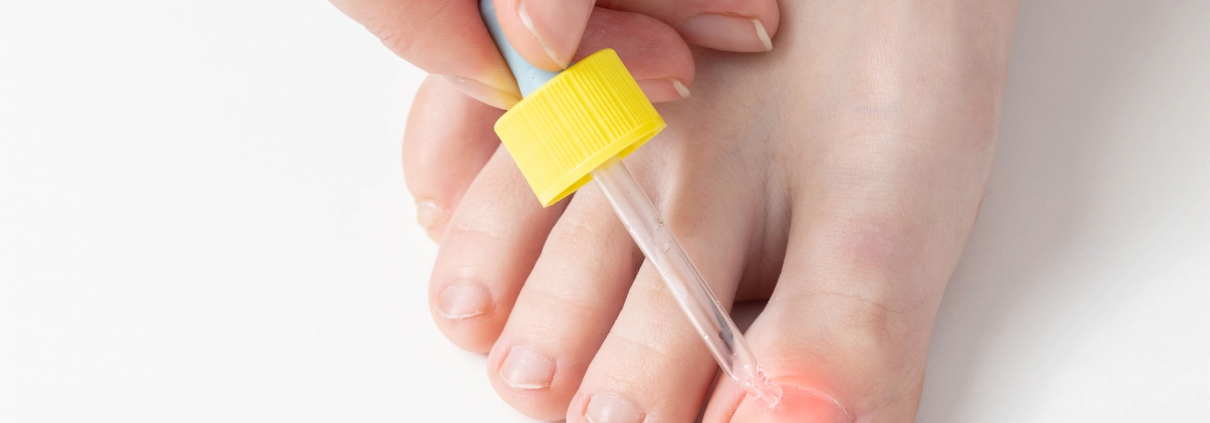Nail fungus
What is the cause of nail fungus?
In healthy and normal people, fungal nail infection is mostly caused by sweat and humidity. One of the main places for the transfer and creation of fungi are public showers in swimming pools or gyms. Going to beauty salons to take care of nails is another factor for getting nail fungus. If sanitary equipment is not used in these centers, it will be possible to transfer and create fungus. Living with someone who has this problem can also cause the fungus to spread.
According to observations, athletes are more susceptible to nail fungus than other people, because they wear tight shoes and their socks stick to their feet and their nails suffer a lot of blows during training. For this reason, nail fungus is common in these people. In addition, chronic blows can also be a factor for weakening nails and putting them at risk of fungal infection.
Old age and suffering from some diseases also increase the possibility of nail fungus. Diseases are problems that affect the body’s immune system and, as a result, increase the possibility of fungal infection. For example, we can mention AIDS, types of diabetes (type 1 diabetes, type 2 diabetes, etc.), cancer, psoriasis, etc. Taking immunosuppressive drugs such as steroids can have a similar effect and cause a yeast infection.
Is nail fungus contagious?
Although nail fungus is usually transmitted to a person from certain places, it is not very contagious. Nail fungus is so common that more than one person in the family is affected by it.
Symptoms of nail fungus
Most of the time, nail fungus is unpleasant in appearance before it causes pain and discomfort. Of course, there is pain and discomfort in some people. This pain and discomfort is aggravated by wearing shoes, doing activities and picking the nails in the wrong way. Some types of fungi affect the nail. One of the most common fungi is called Trichophyton rubrum. This type of fungus has a great tendency to infect the skin and is known as “dermatophyte” and reproduces in the following ways:
The fungus starts from the tip of the nail and covers it all
This condition is called terminal onychomycosis under the nail. This type of fungus is the most common type of infection and in 90% of cases, people involved with this problem are infected with this type of fungus.
Onychomycosis is mostly seen in the toes, and the big toe is usually the first toe where the fungus is seen. Risk factors for this type of nail fungus include aging, swimming, athlete’s foot syndrome, psoriasis, types of diabetes, having fungus in family members or having a suppressed immune system. This fungus usually starts with a change in color at the corner of the big toenail and slowly moves towards the root of the nail. Finally, the toenails become brittle and flaky. Sometimes, you may also see symptoms of athlete’s foot syndrome in the area between the toes or peeling of the soles of the feet. This condition often occurs along with onychomycosis, the main cause of which is T. It is in front of me.
The fungus starts from the base of the nail and covers it all
This type of nail fungus is called primary onychomycosis under the nail. Among the types of fungi, this type has the lowest prevalence and is seen in only 3% of cases. This type of fungus is similar to the previous one, but the difference is that it starts from the base of the nail and slowly extends to the tip of the nail. This nail fungus is always seen in those whose immune system is weak. Unlike the previous case, in this case the fungus is rarely seen under the nail tip. The main cause of this type of fungus is T. rubrum and non-dermatophytic fungi.
How to diagnose nail fungus?
Physical examination alone is not a suitable method to diagnose nail fungus. Various conditions and problems can look similar to nail fungus. So the work of doctors in diagnosis is somewhat difficult. In fact, studies show that only 50 to 60 percent of cases of abnormal nail changes are caused by fungus. Therefore, laboratory tests are always needed for correct diagnosis.
A sample of the nail, by making a hole or removing a part of it, is sent to the laboratory for further examination. In the laboratory, the sample is examined and cultured and tested by polymerase chain reaction. This is done to detect the genetics of organisms. It takes about 6 weeks for sampling and culture to determine the test result. But PCR takes only one day. Of course, the cost of this test is high and therefore, it is done less frequently.





